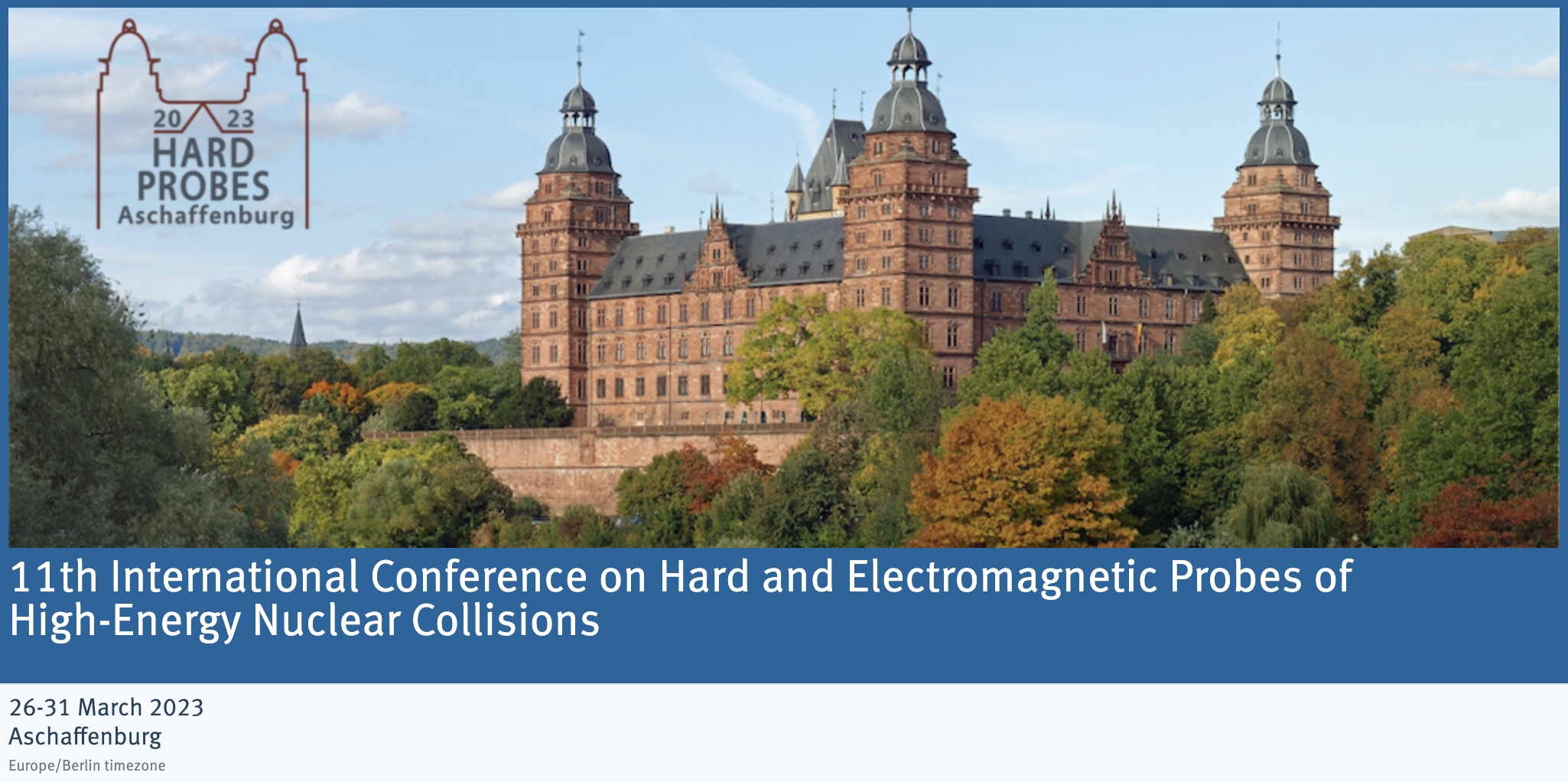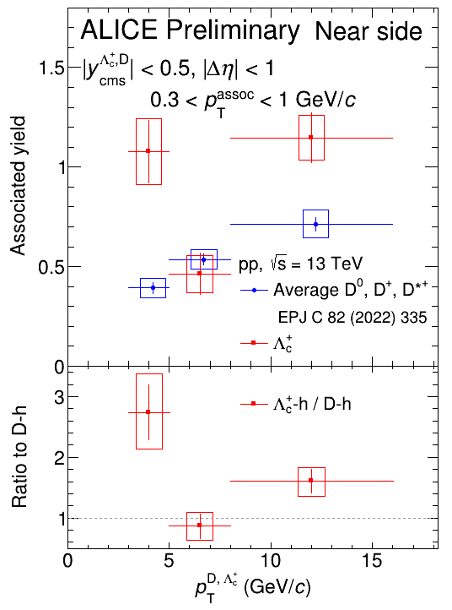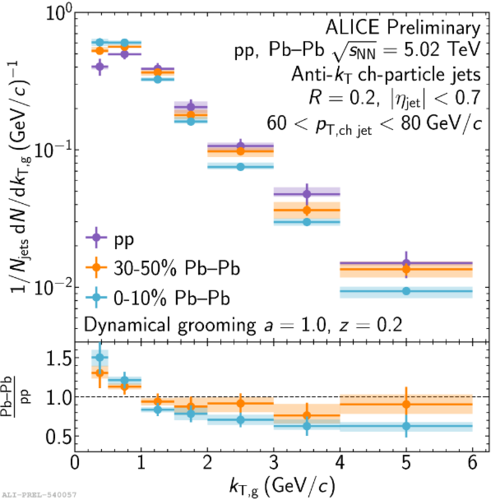
The 11th International Conference on Hard and Electromagnetic Probes of High-Energy Nuclear Collisions (26 to 31 March 2023) Aschaffenburg (Germany) focuses on experimental and theoretical developments on perturbative probes of hot and dense QCD matter as studied in high-energy nucleus-nucleus, proton-nucleus, and proton-proton collisions. The ALICE Collaboration reports a wide range of results on a variety of topics in 43 presentations (consisting of plenary and contributed talks as well as posters). The Conference is attended by more than 300 participants.
The plenary presentation on Monday 27 March reports the highlights of new ALICE measurements.
A selection of the ALICE results is presented below:
Λc+ fragmentation function:
Recent measurements on the production of hadrons carrying a heavy charm quark exhibited surprising differences between proton-proton collisions at LHC energies and elementary electron-positron collisions at lower energies which put into question the hypothesis of universal charm quark hadronization. At the conference, ALICE is presenting two new results that further scrutinise the hardon production mechanism. The first of these, is a measurement on the momentum fraction of the hadronizing charm quark carried by the charmed baryon Λc+ which turns out to be lower when compared to a charm quark hadronizing into a charmed meson. This measurement demonstrates the feasibility of charmed-baryon jet measurements down to low momenta. A substantially improved precision is expected from the ongoing Run 3 data taking.

Reference: ALICE Collaboration, https://arxiv.org/abs/2301.13798
Λc+ - hadron correlation function:
The second result that addresses the hadronization of charm quarks is the measurement of the production of charged hadrons that are close in azimuth to a charmed baryon Λc+. A larger number of charged hadrons is observed when a charm quark hadronizes into a charmed baryon when compared to a charmed meson, especially at low momenta. This observation is qualitatively in line with the softer hadronization of a charm quark into a charmed baryon when compared to a charmed meson.

Jet substructure in Pb-Pb:
When a high-energy quark or gluon leaves the interaction zone, it produces gluon radiation, forming a so-called parton-shower, which hadronise into hadrons, i.e. a jet of particles. Correlations between particles in the jet result in an internal jet structure that contains additional information about the parton shower which can be modified by interactions with a hot and dense QCD medium, e.g. a quark-gluon plasma. Properties of the medium are encoded in this substructure, including information on localized sources that serve as scattering centers. In a new measurement, ALICE searched for these scattering centers by looking for when part of a jet is deflected unexpectedly, resulting in an increased particle yield at large transverse momentum kT relative to the parent subjet. No clear enhancement is visible at high kT, constraining the size of any effects due to such scattering centers.

